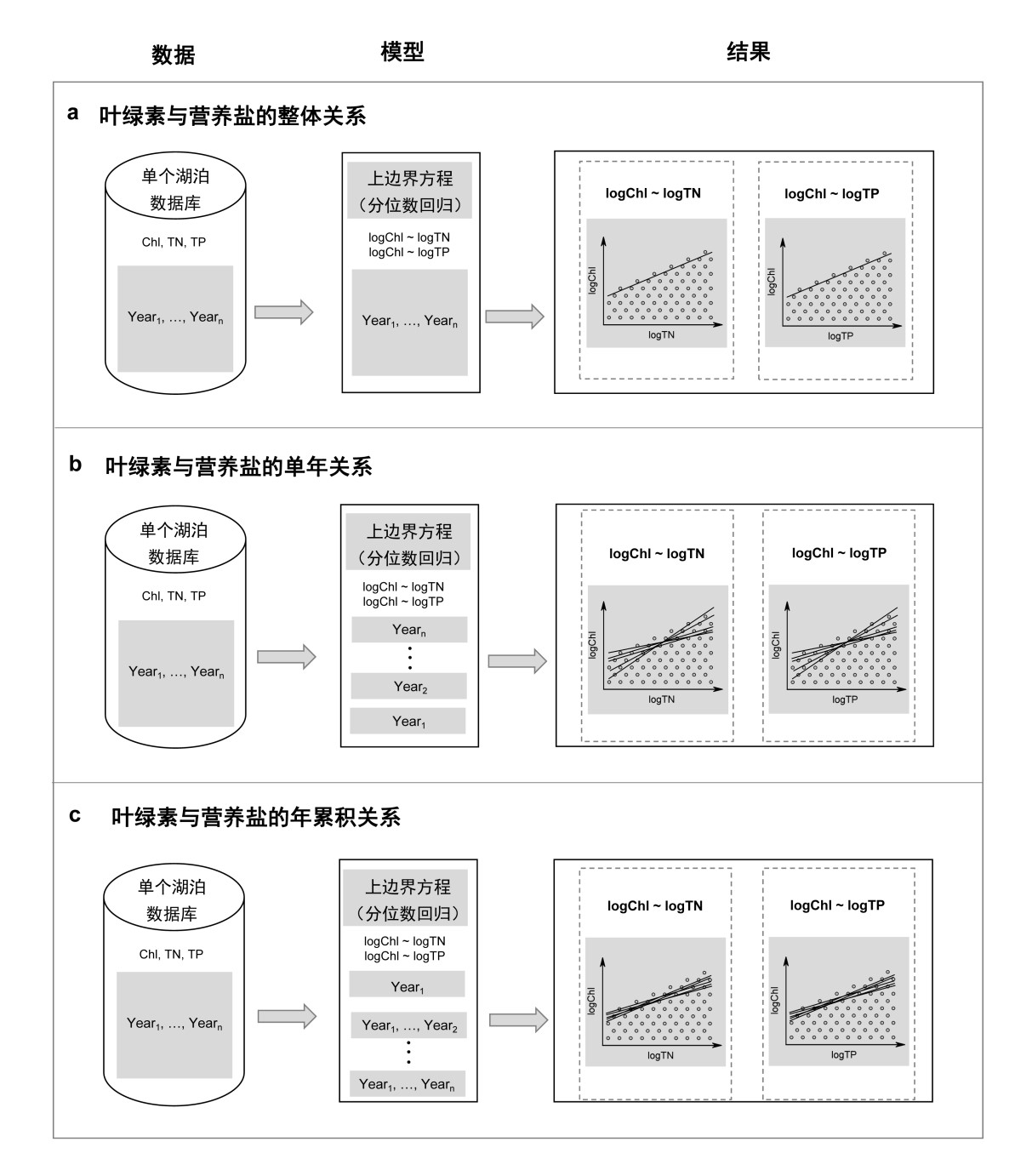

A reliable chlorophyll–nutrient relationship (CNR) is essential for lake eutrophication management. Although the spatial variability of CNRs has been extensively explored, temporal variations of CNRs at the individual lake scale has rarely been discussed. The paucity of information about temporal dependence in CNRs may in part be due to the lack of a suitable statistical framework that helps guide such investigations. In order to reveal temporal dependence of CNR, this study develop a novel statistical framework. In the framework, we employ quantile regression to generate overall (the entire dataset), annual (subsets for each year), and accumulative (subsets collected before a certain year) CNRs. We aim to 1) show biases of annual relationships by comparing the overall and annual relationships and 2) determine whether or not data accumulation is enough to develop a reliable CNR. We use Lake Champlain and Lake Kasumigaura as case studies to illustrate the necessary steps needed to utilize this novel framework. Results show that large interannual variations exist for CNRs. Accumulative relationships tend to converge to the overall relationship, indicating that overall relationships are reliable for informing lake-specific eutrophication management in the two case study lakes. The novel statistical framework that we propose for a procedure to estimate reliable CNRs is important for informing lake-specific eutrophication control decision-making processes.
